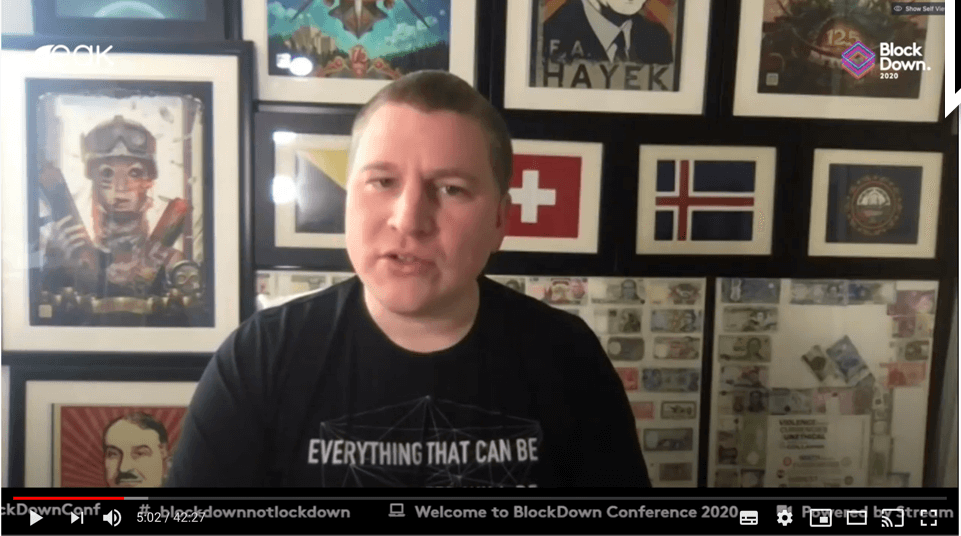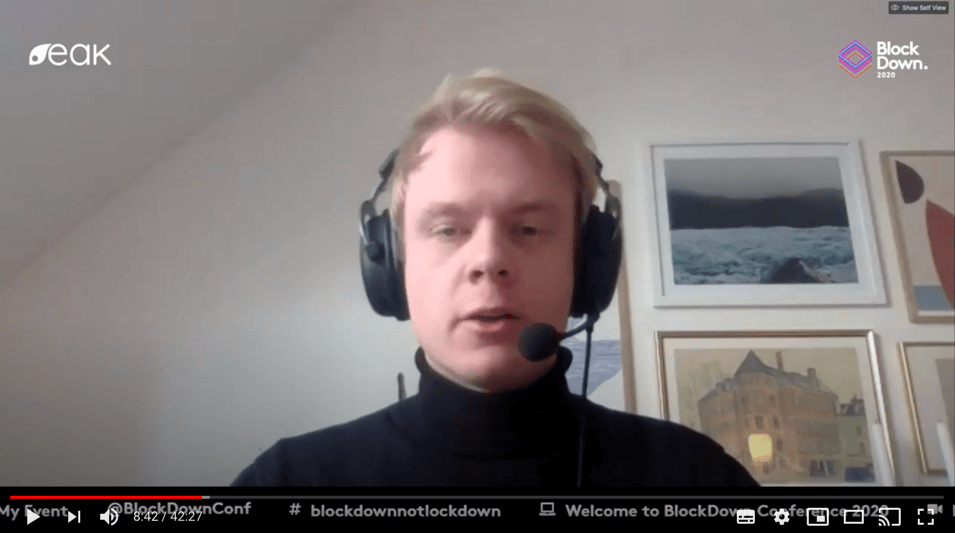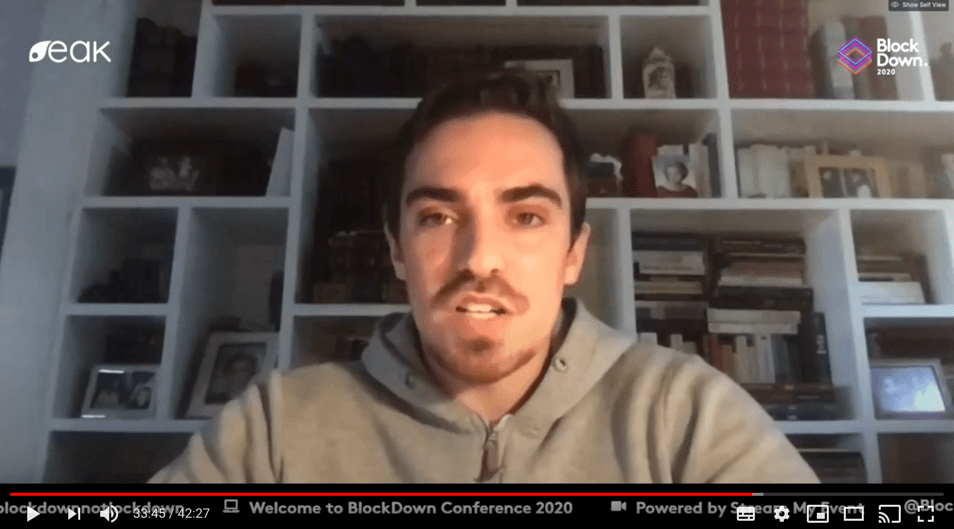 Forget flash crashes and liquidated loans — Here’s why DeFi is set to explode
Forget flash crashes and liquidated loans — Here’s why DeFi is set to explode Forget flash crashes and liquidated loans — Here’s why DeFi is set to explode

Cover art/illustration via CryptoSlate. Image includes combined content which may include AI-generated content.
With the deepening global crisis, no markets have been spared. The volatility of ‘black Thursday’ in March saw all markets nosedive from traditional stocks to Crypto. DeFi was particularly hit with more than $8mn of Maker loans liquidated as the price of ETH plummeted by 50 percent. Yet, experts in the space not only believe that such incidents highlight DeFi’s robust coping mechanisms but as the economic fallout worsens, DeFi will come into its own.
During a panel discussion at the BlockDown virtual conference, I was able to chat with Managing Director at Yeoman’s Capital David Johnston, Head of Integrations at Maker Foundation Nikolaj Lollike, and Jose Mercado Partner at Amazix Capital. With years of combined experience in the space, there couldn’t have been three more bullish voices for DeFi and the crypto space in general. Here’s why:
DeFi allows people to earn interest on their savings
“I fundamentally believe that DeFi is going to lead this next wave,” says Johnston. “The combination of stablecoins makes it easy for people to access and DeFi giving them interest is extremely compelling in a world in which yield has disappeared for traditional savings accounts and treasuries and things like that.”

Working closely with Pegnet, the stablecoin network for DeFi, he says that the reason billions of dollars are beginning to flow in is that the system completely removes the need for intermediaries of any sort. This cuts down enormously on costs allowing retail users to make their money work for them for the first time.
Having abandoned the existing financial system himself in 2012, Johnston is all-in on crypto. He adds:
“People are getting a great rate of return on their assets at 7-10% percent… In the current environment, that’s extremely attractive. So I expect to see more and more billions coming into the DeFi platforms.”
It gives equal access to sophisticated financial applications
Beyond the fundamentals of borrowing and lending, Lollike highlights the fact that DeFi allows everyday people to access otherwise inaccessible opportunities. He says, “What we are really concerned with at Maker is creating open and equal access to sophisticated financial applications. The way that you can do that is basing them on decentralized infrastructure on Ethereum or other smart contract platforms out there.
We’re building the back end infrastructure collectively for the financial world in the 21st century.”

With that in mind, then, who are the people using the products that DeFi has to offer? Lollike says that Maker is seeing a lot of natural demand from growing countries, especially those with high or hyperinflation such as Argentina or countries that “don’t even have good centralized solutions for financial services.”
He continued:
“DeFi has a really natural pull as it is the only way to earn savings on their money in many developing economies so that’s where I think we’ll see the most natural growth in the coming year.”
The COVID-19 crisis highlights the fragilities of the existing system
Johnston talks about the users of DeFi products as being mainly retail but says that the appeal is far wider than just developing countries:
“In the western world moving into a recession, earning 7-10 percent sounds really attractive when the whole market is down 30-40%. People aren’t going into equities right now, the correction, who knows how long it will go… this is the perfect time for the industry.”
He says that bit by bit, DeFi is “disassembling” the entire world’s financial system and rebuilding it in the form of the Dapps available today. With many traditional banks closing down branches and the ceaseless money printing, it’s the perfect storm for the crypto space with DeFi at the helm. “Physical banking was already on the decline, we have moved into the future five years faster now.”
Mercado echoes his sentiments that the COVID crisis will be bullish for crypto and DeFi in the end. He says:
“Overall, it will definitely be bullish for the space, the reason we all got in the space is everything this crisis highlights. I don’t think COVID changes anything, it just accelerates us towards where we were going anyway. With dollar deflation wreaking havoc in emerging economies, and Lebanon defaulting on its debt… All that does is highlight the fragilities in a dollarized global financial system… Crypto will give people freedom.”

Johnson added:
“It’s accelerating the trend… Crypto is lowering the barrier to a retail level where people can have the freedom for the first time in their life.”
Bringing real-world assets onto the blockchain
The focus up until now seems predominantly on retail users but DeFi, just like the rest of the space, needs institutions to grow to its potential. Lollike explains that Maker is focused on interoperability and ensuring that the ecosystem is ready for financial institutions because the idea is not just the millions of dollars but the trillions, by bringing real-world assets and collateral into the system.
“We haven’t seen the last blockchain network yet,” he says, “different blockchain networks have different value propositions especially when we look at different use cases and institutions, there is some value to having permissioned chains, permissioned enterprise-grade blockchains that leverage the ecosystem without being a silo on a new chain.”
Johnston agrees that bringing real-world assets into the blockchain is absolutely critical to future growth. He stated:
“What we need are to transfer trillions of dollars of USD and euros and yen and yuan and Swiss francs… and gold and silver… having the ability to move all of that at a tenth of a penny with no liquidity limits with no counterparty with no intermediary involved is so compelling it really makes this technology inevitable.”
The DeFi space will work with (or around) regulation
Despite the recent recommendations by the Financial Stability Board (FSB) to heavily regulate and even prohibit stablecoins, no one on the panel is deterred. Lollike jokes that anyone in the industry knows that Bitcoin gets banned every week and that these regulations will not be an issue for the space.
Day 28 – Stablecoins, Libra 2.0 & PegNet https://t.co/vjlX35iK92 Become Centralized / Regulated or fully Decentralized there will be no in between for Stablecoins.
— David A. Johnston (@DJohnstonEC) April 24, 2020
That said, at Maker, they have a legal team that “works very closely with regulators in the EU and US to explain the technology” and there is generally a lot of positivity toward it. Johnston believes that what will happen is a “bifurcation” when it comes to stablecoins, the motor powering DeFi.
They will either have to be centralized fully regulated stablecoins in the style of Goldman Sachs or they will need to be fully decentralized. “That’s what’s coming,” he says, “you will have to pick a side, fully regulated or fully decentralized.”
This is why DeFi is so compelling because there is no centralized entity that can be regulated by a jurisdiction, the focus is on the end-user.
And what about the vulnerabilities exposed by market volatility?
Lollike concedes that while millions of dollars of Maker loans were liquidated, it was not a crash that was exclusive to DeFi. He said:
“It was a market crash across all the markets that also trickled into crypto. There are risks in any market to your investment.”
He explains that the liquidations were sparked by a 50 percent price drop in ETH. It was not due to a bug in the system and the protocol acted as expected. “It was the ultimate fire drill that showed how resilient the system is and how it recapitalized that debt.”
Moreover, unlike traditional markets, with DeFi, everything is transparent so anyone can see how much collateral there is at any time. Johnston echoes his sentiments and also touches on the bZx flash crash which was due to centralized oracles and not a vulnerability in DeFi itself. The space is more robust than ever.
“People will start to get the message that they do have a choice,” he says. “If you literally can’t get cash out of an ATM and bank branches are closed, the only option you really have is to opt into something else.”
We don’t yet know what the final economic outcome might be, but stablecoins with their ability to get money quickly where it’s needed coupled with high-interest accounts, staking, and low-interest loans provide tremendous value. DeFi is set to explode and COVID has just given it all the more reason to.
Watch the full video on the DeFi discussion below.









































































































